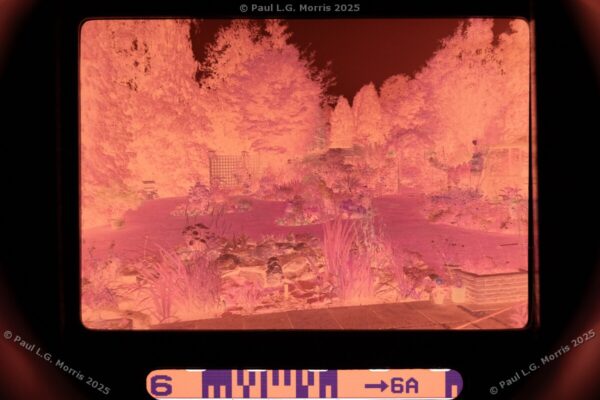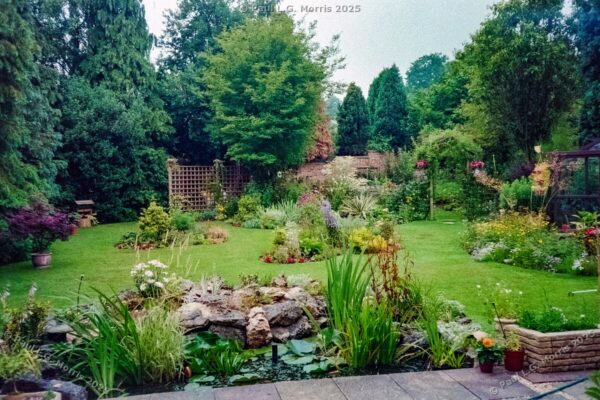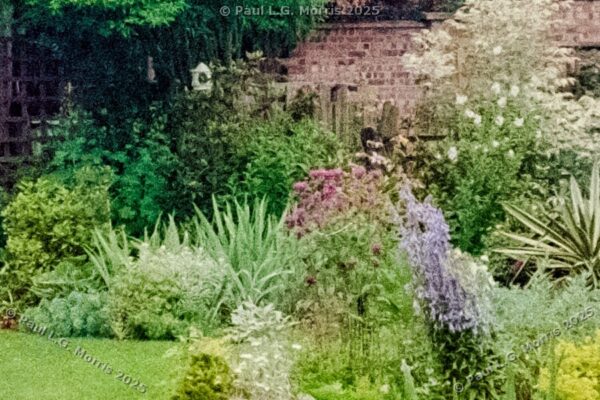From my previous post I have selected one negative to illustrate some points with digitising negatives using consumer grade film cameras – in this case an Olympus µ(mju) 35mm camera.
What I have discovered from this exercise is that, essentially, standards were lower: A ‘supersize’ print was 6″ x 4″; silk paper was used to disguise imperfections; and the lens quality appears to be poorer than modern lenses. This example is a photo of our garden at the time. First the negative as it came out of the camera (using a macro lens and film holder):

Below is that negative processed to a positive image. There has been no sharpening, just inverting the negative and with basic colour/contrast/exposure adjustments applied:

At web sizes it doesn’t look too bad but if we look at the centre of the image:

This doesn’t have the crispness we have come to expect. If we now look at the bottom left corner we see this:

The quality at the corner is distinctly lacking.
But does this really matter? I think not. At the time I was pleased (on most occasions) with the prints and it was rare (and expensive!) to go larger. So I am happy with getting my images onto my computer where I can share them better with the family – and that is what is important!
